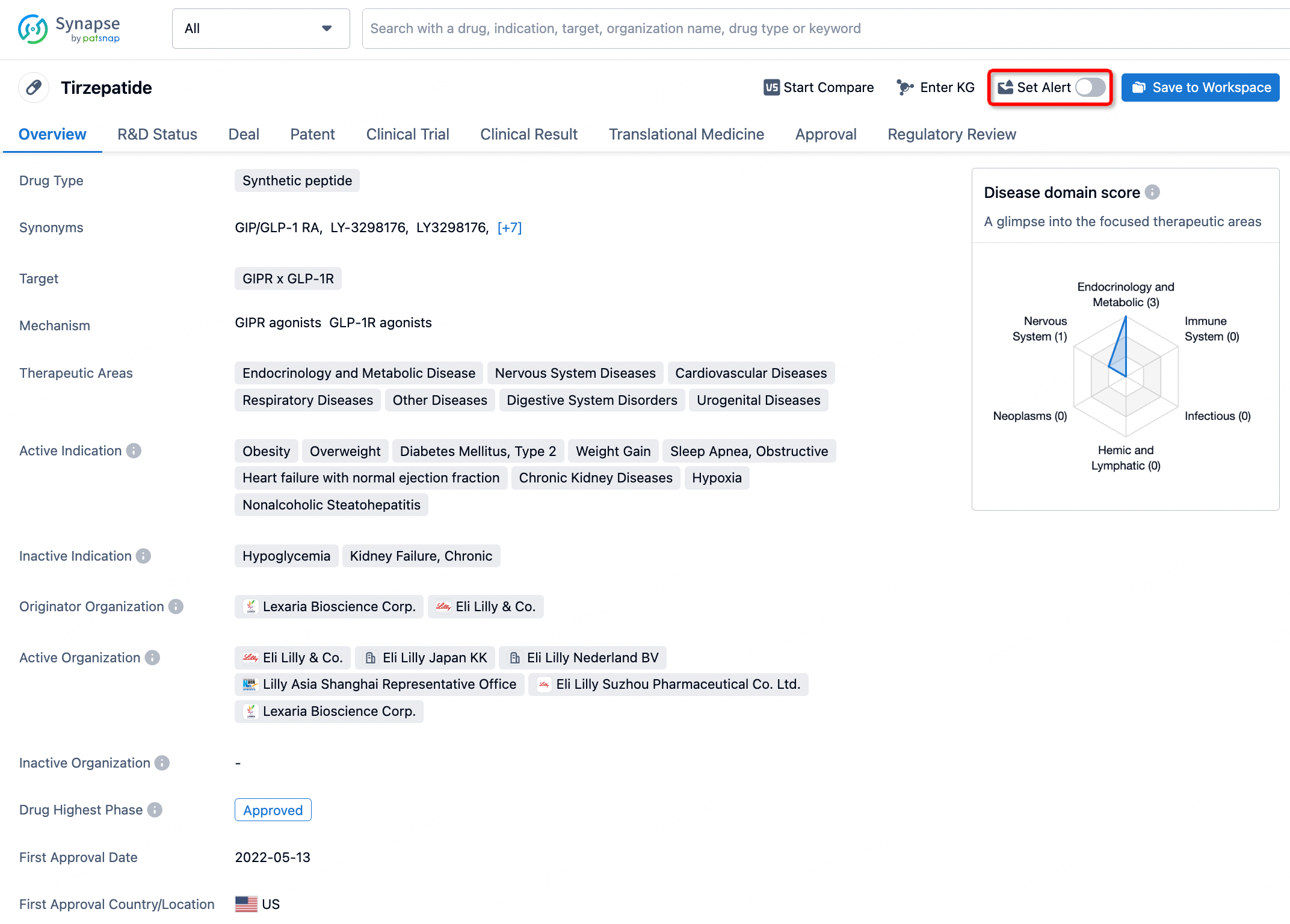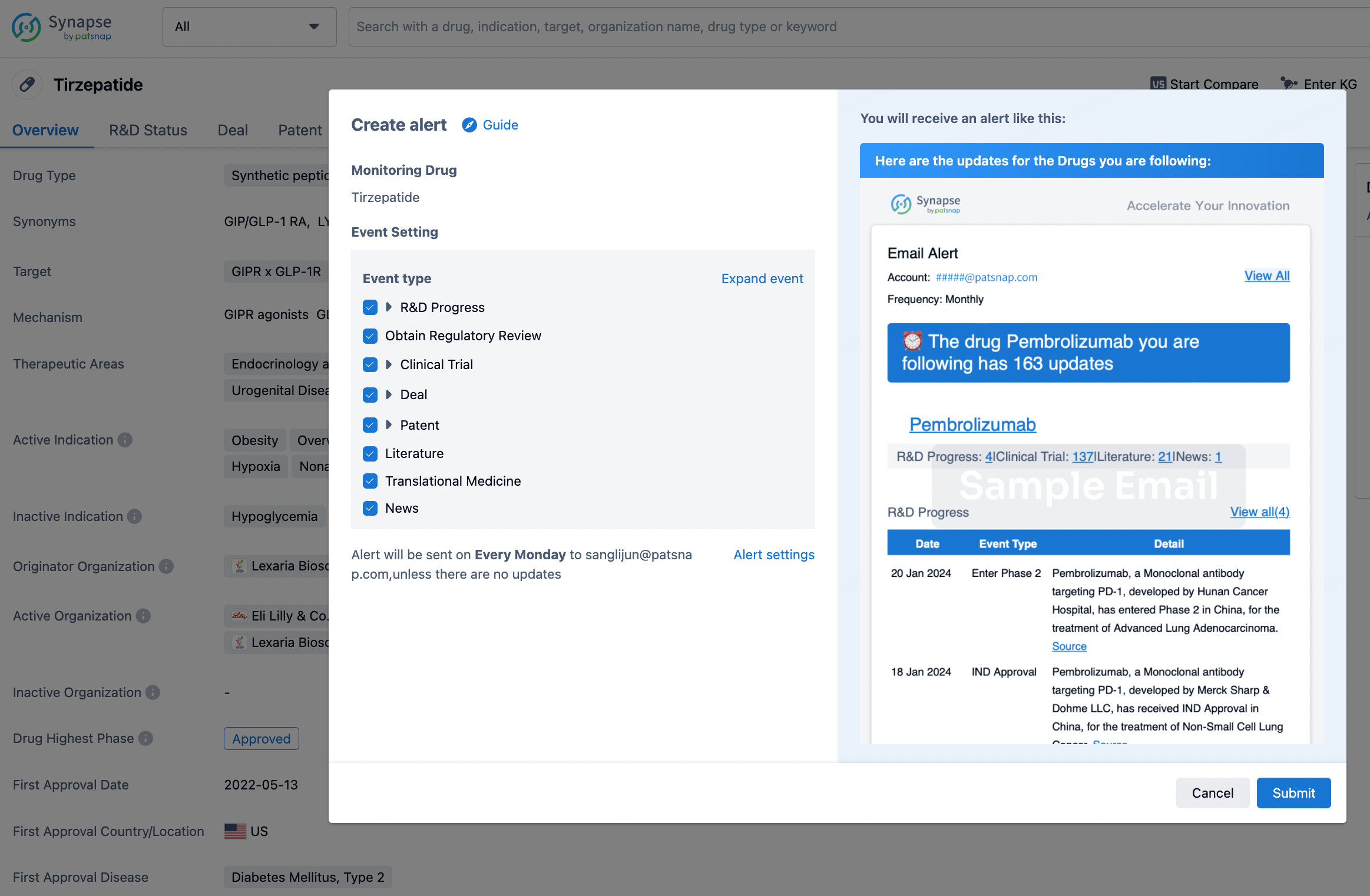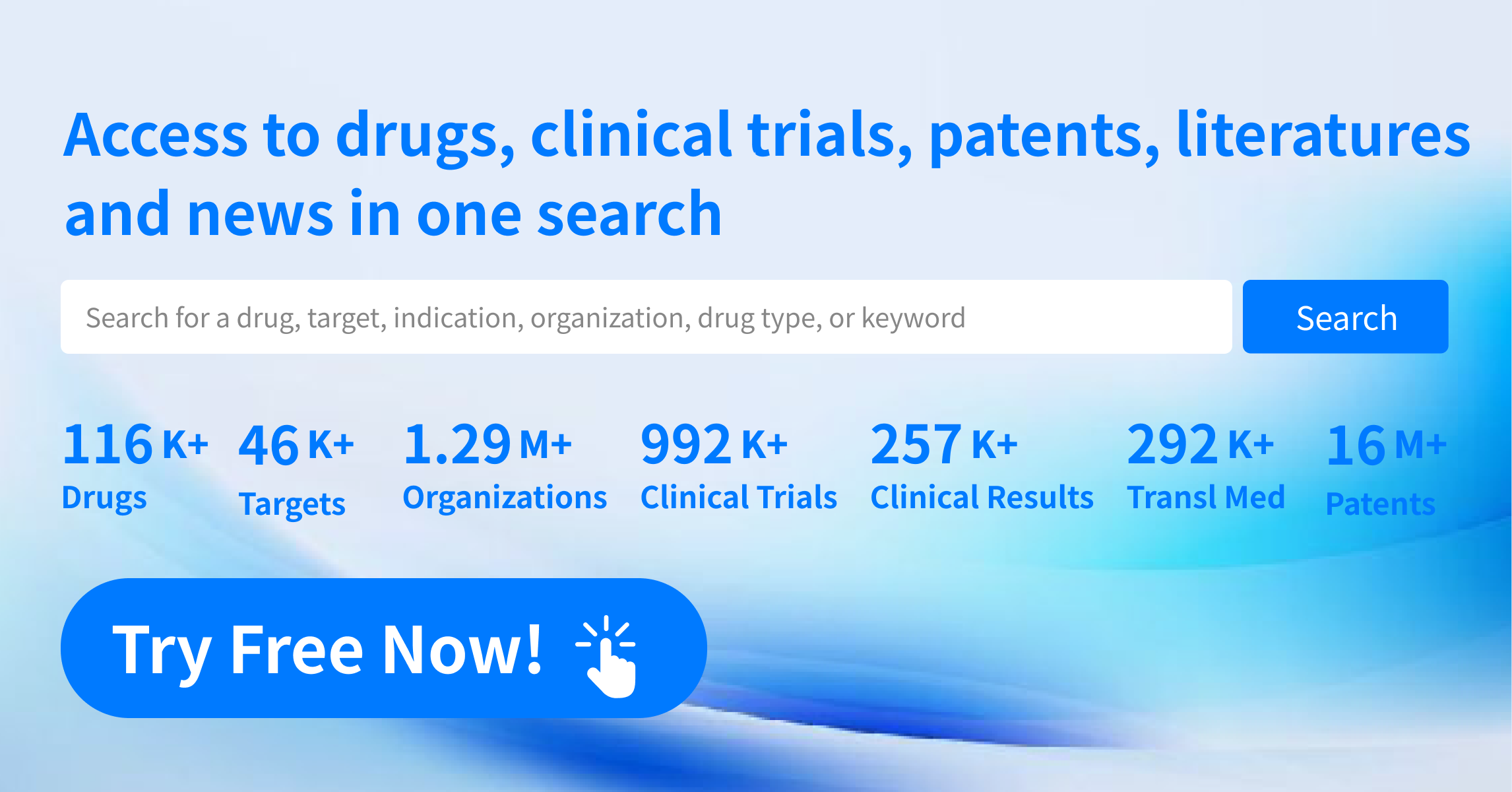Request Demo
What is Chloroxoquinoline used for?
14 June 2024
Chloroxoquinoline is an intriguing compound that has piqued the interest of researchers and medical professionals alike due to its multifaceted pharmacological properties. This synthetic antibacterial and antiprotozoal agent, known by trade names such as Enteroquinol and Yodoquinol, has been studied extensively for its potential applications in treating a variety of infections. Initially developed in the mid-20th century, Chloroxoquinoline primarily targets intestinal amoebiasis and is being investigated for its potential to combat other parasitic infections and bacterial pathogens. Research institutions around the globe continue to explore its efficacy, safety, and potential new indications, aiming to expand the therapeutic utility of this versatile drug.
Chloroxoquinoline belongs to the 8-hydroxyquinoline class of compounds, which are characterized by their capacity to bind essential metal ions, thereby disrupting the function of microbial enzymes. This drug acts primarily within the gastrointestinal tract and has been effective in eradicating Entamoeba histolytica, the causative agent of amoebiasis. Its use in treating this infection has been well-documented, and ongoing research is investigating its broader spectrum of activity, including potential roles in treating bacterial infections resistant to other antibiotics. Despite its promise, Chloroxoquinoline's use in clinical practice is sometimes limited due to concerns about side effects and optimal dosing strategies. Nonetheless, it remains a valuable tool in the arsenal against parasitic diseases, and ongoing studies aim to optimize its safety profile and therapeutic efficacy.
Chloroxoquinoline exerts its antimicrobial action through a multifaceted mechanism that disrupts the essential biological processes of pathogens. One of the primary ways it achieves this is by chelating metal ions such as iron and zinc. These metal ions are crucial cofactors for many enzymes that pathogens rely on for survival and replication. By binding to these ions, Chloroxoquinoline effectively inactivates these enzymes, thereby inhibiting the pathogen's metabolic processes. This metal chelation disrupts the cellular machinery of parasites like Entamoeba histolytica, leading to their eventual death.
Additionally, Chloroxoquinoline has been shown to interfere with the DNA replication of certain pathogens. By intercalating into the DNA strands, it prevents the proper unwinding and replication of the genetic material, thereby halting cell division and propagation. This dual action—enzyme inhibition through metal ion chelation and interference with DNA replication—makes Chloroxoquinoline a potent antimicrobial agent. However, the precise details of its mechanism are still under investigation, and understanding these nuances can help in refining its therapeutic applications and minimizing potential side effects.
Administering Chloroxoquinoline requires careful consideration to maximize its efficacy while minimizing potential risks. The drug is typically available in oral tablet form, although other formulations such as suspensions or suppositories may be used depending on the patient’s condition and specific requirements. The standard dosage for treating intestinal amoebiasis in adults is usually 650 mg three times a day for 20 days. However, the dosage may vary based on the severity of the infection, the patient's age, weight, and overall health status.
The onset of action of Chloroxoquinoline can vary, but patients generally start to experience relief from symptoms within a few days of beginning treatment. It's important to complete the full course of therapy, even if symptoms improve earlier, to ensure complete eradication of the pathogen and to prevent recurrence. For pediatric patients, dosage adjustments are necessary, and a healthcare professional should determine the appropriate amount based on the child’s weight and age.
It is also essential to take Chloroxoquinoline with food to minimize gastrointestinal discomfort and enhance absorption. Patients are advised to follow their healthcare provider’s instructions closely and report any unusual symptoms or side effects promptly. Adherence to the prescribed regimen is crucial for the drug’s effectiveness and for reducing the risk of developing drug-resistant strains of pathogens.
While Chloroxoquinoline is generally considered effective and safe when used appropriately, it is not without potential side effects. Common side effects include nausea, vomiting, diarrhea, and abdominal cramps. These gastrointestinal symptoms are typically mild and tend to resolve as the body adjusts to the medication. However, in some cases, more severe side effects may occur, such as severe skin reactions, peripheral neuropathy, or optic neuropathy, leading to vision disturbances. Patients experiencing any of these serious side effects should seek medical attention immediately.
Chloroxoquinoline is contraindicated in individuals with a known hypersensitivity to the drug or its components. It should also be used with caution in patients with pre-existing liver disease, as the drug is metabolized in the liver and could exacerbate hepatic conditions. Additionally, patients with a history of optic neuritis or other serious ocular conditions should avoid Chloroxoquinoline due to the risk of exacerbating these issues.
Pregnant and breastfeeding women should also exercise caution and consult their healthcare provider before starting treatment with Chloroxoquinoline, as the potential effects on the fetus or nursing infant are not well-studied. It is crucial to weigh the benefits of treating the infection against the potential risks to the mother and child in these cases.
Chloroxoquinoline's interaction with other drugs can influence its effectiveness and the likelihood of side effects, making it essential to consider potential drug interactions. One notable interaction is with other chelating agents, such as penicillamine, which may interfere with Chloroxoquinoline's mechanism of action and reduce its efficacy. Patients taking such medications should inform their healthcare provider, who may need to adjust the treatment regimen accordingly.
Concomitant use of Chloroxoquinoline and other hepatotoxic drugs should be approached with caution to avoid cumulative liver damage. Monitoring liver function tests may be necessary during treatment, particularly in patients with underlying liver conditions or those on long-term therapy. Additionally, drugs that affect gastrointestinal motility, such as certain antacids or laxatives, can alter the absorption of Chloroxoquinoline, thus impacting its therapeutic levels.
It is also important to note that Chloroxoquinoline may potentiate the effects of anticoagulants, leading to an increased risk of bleeding. Patients on blood thinners should be closely monitored, and dosage adjustments may be necessary to ensure safe and effective anticoagulation. Consulting a healthcare provider before starting or stopping any medications while on Chloroxoquinoline is imperative to manage potential interactions effectively.
In summary, Chloroxoquinoline is a valuable antimicrobial agent with a unique mechanism of action that targets essential processes in pathogens. While effective in treating intestinal amoebiasis and potentially other infections, it requires careful administration and monitoring to maximize benefits and minimize risks. Understanding its side effects, contraindications, and potential drug interactions is crucial for its safe and effective use in clinical practice. Ongoing research continues to refine its therapeutic applications and explore new possibilities for this versatile drug.
Chloroxoquinoline belongs to the 8-hydroxyquinoline class of compounds, which are characterized by their capacity to bind essential metal ions, thereby disrupting the function of microbial enzymes. This drug acts primarily within the gastrointestinal tract and has been effective in eradicating Entamoeba histolytica, the causative agent of amoebiasis. Its use in treating this infection has been well-documented, and ongoing research is investigating its broader spectrum of activity, including potential roles in treating bacterial infections resistant to other antibiotics. Despite its promise, Chloroxoquinoline's use in clinical practice is sometimes limited due to concerns about side effects and optimal dosing strategies. Nonetheless, it remains a valuable tool in the arsenal against parasitic diseases, and ongoing studies aim to optimize its safety profile and therapeutic efficacy.
Chloroxoquinoline exerts its antimicrobial action through a multifaceted mechanism that disrupts the essential biological processes of pathogens. One of the primary ways it achieves this is by chelating metal ions such as iron and zinc. These metal ions are crucial cofactors for many enzymes that pathogens rely on for survival and replication. By binding to these ions, Chloroxoquinoline effectively inactivates these enzymes, thereby inhibiting the pathogen's metabolic processes. This metal chelation disrupts the cellular machinery of parasites like Entamoeba histolytica, leading to their eventual death.
Additionally, Chloroxoquinoline has been shown to interfere with the DNA replication of certain pathogens. By intercalating into the DNA strands, it prevents the proper unwinding and replication of the genetic material, thereby halting cell division and propagation. This dual action—enzyme inhibition through metal ion chelation and interference with DNA replication—makes Chloroxoquinoline a potent antimicrobial agent. However, the precise details of its mechanism are still under investigation, and understanding these nuances can help in refining its therapeutic applications and minimizing potential side effects.
Administering Chloroxoquinoline requires careful consideration to maximize its efficacy while minimizing potential risks. The drug is typically available in oral tablet form, although other formulations such as suspensions or suppositories may be used depending on the patient’s condition and specific requirements. The standard dosage for treating intestinal amoebiasis in adults is usually 650 mg three times a day for 20 days. However, the dosage may vary based on the severity of the infection, the patient's age, weight, and overall health status.
The onset of action of Chloroxoquinoline can vary, but patients generally start to experience relief from symptoms within a few days of beginning treatment. It's important to complete the full course of therapy, even if symptoms improve earlier, to ensure complete eradication of the pathogen and to prevent recurrence. For pediatric patients, dosage adjustments are necessary, and a healthcare professional should determine the appropriate amount based on the child’s weight and age.
It is also essential to take Chloroxoquinoline with food to minimize gastrointestinal discomfort and enhance absorption. Patients are advised to follow their healthcare provider’s instructions closely and report any unusual symptoms or side effects promptly. Adherence to the prescribed regimen is crucial for the drug’s effectiveness and for reducing the risk of developing drug-resistant strains of pathogens.
While Chloroxoquinoline is generally considered effective and safe when used appropriately, it is not without potential side effects. Common side effects include nausea, vomiting, diarrhea, and abdominal cramps. These gastrointestinal symptoms are typically mild and tend to resolve as the body adjusts to the medication. However, in some cases, more severe side effects may occur, such as severe skin reactions, peripheral neuropathy, or optic neuropathy, leading to vision disturbances. Patients experiencing any of these serious side effects should seek medical attention immediately.
Chloroxoquinoline is contraindicated in individuals with a known hypersensitivity to the drug or its components. It should also be used with caution in patients with pre-existing liver disease, as the drug is metabolized in the liver and could exacerbate hepatic conditions. Additionally, patients with a history of optic neuritis or other serious ocular conditions should avoid Chloroxoquinoline due to the risk of exacerbating these issues.
Pregnant and breastfeeding women should also exercise caution and consult their healthcare provider before starting treatment with Chloroxoquinoline, as the potential effects on the fetus or nursing infant are not well-studied. It is crucial to weigh the benefits of treating the infection against the potential risks to the mother and child in these cases.
Chloroxoquinoline's interaction with other drugs can influence its effectiveness and the likelihood of side effects, making it essential to consider potential drug interactions. One notable interaction is with other chelating agents, such as penicillamine, which may interfere with Chloroxoquinoline's mechanism of action and reduce its efficacy. Patients taking such medications should inform their healthcare provider, who may need to adjust the treatment regimen accordingly.
Concomitant use of Chloroxoquinoline and other hepatotoxic drugs should be approached with caution to avoid cumulative liver damage. Monitoring liver function tests may be necessary during treatment, particularly in patients with underlying liver conditions or those on long-term therapy. Additionally, drugs that affect gastrointestinal motility, such as certain antacids or laxatives, can alter the absorption of Chloroxoquinoline, thus impacting its therapeutic levels.
It is also important to note that Chloroxoquinoline may potentiate the effects of anticoagulants, leading to an increased risk of bleeding. Patients on blood thinners should be closely monitored, and dosage adjustments may be necessary to ensure safe and effective anticoagulation. Consulting a healthcare provider before starting or stopping any medications while on Chloroxoquinoline is imperative to manage potential interactions effectively.
In summary, Chloroxoquinoline is a valuable antimicrobial agent with a unique mechanism of action that targets essential processes in pathogens. While effective in treating intestinal amoebiasis and potentially other infections, it requires careful administration and monitoring to maximize benefits and minimize risks. Understanding its side effects, contraindications, and potential drug interactions is crucial for its safe and effective use in clinical practice. Ongoing research continues to refine its therapeutic applications and explore new possibilities for this versatile drug.
How to obtain the latest development progress of all drugs?
In the Synapse database, you can stay updated on the latest research and development advances of all drugs. This service is accessible anytime and anywhere, with updates available daily or weekly. Use the "Set Alert" function to stay informed. Click on the image below to embark on a brand new journey of drug discovery!
AI Agents Built for Biopharma Breakthroughs
Accelerate discovery. Empower decisions. Transform outcomes.
Get started for free today!
Accelerate Strategic R&D decision making with Synapse, PatSnap’s AI-powered Connected Innovation Intelligence Platform Built for Life Sciences Professionals.
Start your data trial now!
Synapse data is also accessible to external entities via APIs or data packages. Empower better decisions with the latest in pharmaceutical intelligence.


